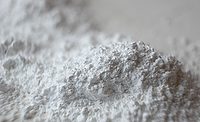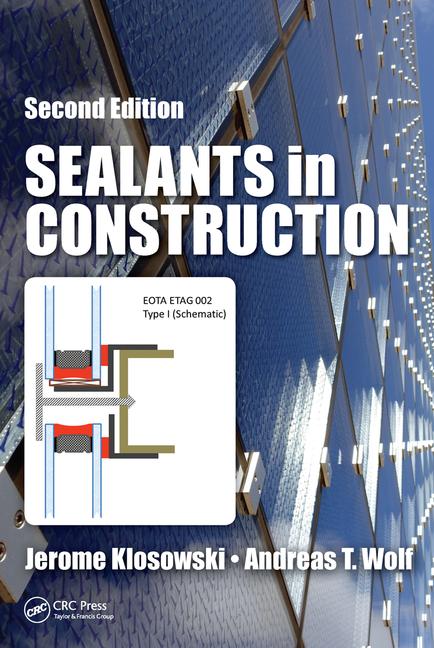Minerals for Performance Enhancement of Hybrid Medium-Modulus Sealants
The right mineral choice is key to optimizing processing and performance for silane-modified sealants.

Hybrid sealants are best defined as a fusion of technologies: the best performance properties of urethanes combined with the best of silicones. In this fusion process, each technology’s inherent weaknesses are minimized. Urethane and silicone sealants are often referred to as high-performance sealants because they provide significant adhesion, movement capability, and durability. Hybrid sealants, therefore, combine the strength of polyurethanes with the weathering resistance of silicones to create a high-performance, functionally versatile sealant.
Along with their high-performance properties, hybrid sealants are gaining in popularity due to their solvent- and isocyanate-free nature, as well as their flexibility and adaptability. Hybrid sealants bond with most construction materials, such as concrete, stone, wood, metal, plastic, polycarbonate, ceramic tile, and gypsum boards. They also bond well with porous surfaces.1
In silane-modified sealants, the mineral component can represent over 50 wt% of a formulation. The right mineral choice is therefore key to optimizing the sealants’ processing and ultimate performance.
Calcium Carbonates
Many mineral types are used in sealants and adhesives for applications including construction, transportation, and DIY. Calcium carbonates are widely used in these products and can be classified in two categories: material derived from natural renewable sources, such as ground calcium carbonate (GCC); or grades produced synthetically, such as precipitated calcium carbonate (PCC).
Ultrafine PCCs with average surface areas between 13-24 m2/g have the highest impact on thixotropy and reinforcement. Used largely for elastic bonding, they are usually surface treated to improve dispersion and reduce moisture.
Sealants based on hybrid polymers such as silane-terminated polyethers are promoted as providing a good combination of strength, weathering characteristics, paint adhesion, and stain resistance, as well as excellent adhesion to a wide range of substrates. One-component silane-terminated polyether sealants provide a demanding environment for the minerals that can constitute over 50% of its mass. For example, the mineral should contribute positively to sealant whiteness, viscosity, anti-slump behavior, and mechanical properties without adversely affecting storage stability, curing, and adhesion properties.
Experimental Details
The evaluation of minerals in silane-terminated polyether sealants has been undertaken in a medium-modulus system. Basic formulation details are given in Table 1. All precipitated calcium carbonates are surface treated.

Sealant mixes were all carried out under vacuum in a Labotop mixer from PC Laborsystem. Samples were conditioned in cartridges. The rheological properties of the mixes were measured after seven days at 23°C and 50°C conditioning using a Kinexus Pro rheometer (PP25, 23°C).
Extrusion rates of the sealant were measured on the conditioned cartridges at constant pressure and time, recording the quantity extruded. The storage stability is calculated as the ratio of the extrusion rate after seven days’ storage at 50°C and 23°C. Tensile strength and elongation were measured after curing for one week in a controlled atmosphere.
Results and Discussion
The PCCs were varied to incorporate combinations of products of different sizes (surface area varying between 14-21 m2/g), as shown in Table 2. PCCs A and B display the lowest moisture content (-25%) compared to the other ultrafine PCC grades.

Viscosity profiles of sealants incorporating the different PCC grades are shown in Figure 1. Sealants produced with PCCs A, B, and C exhibited similar viscosities, with a slightly higher values for PCCs A and B at low shear rate. The sealant produced with PCC D exhibited the highest viscosity.

Figure 1. Viscosity profiles of the sealant after storage (seven days at 23°C).
The extrusion rate values of sealants incorporating the different PCC grades are shown in Table 3. Sealants produced with PCCs A and B displayed similar extrusion rates and excellent storage stability. The sealant containing PCC C exhibited similar storage stability, but higher absolute values. Finally, the sealant made with PCC D displayed slightly lower but still acceptable storage stability.

The optical and mechanical properties of the formulation are shown in Table 4. The different PCCs used enabled good brightness to be reached, leading to potential reduction of expensive pigments like titanium dioxide in white sealant formulations. For similar elongation, the sealant produced with the competitive PCC C exhibited the lowest tensile strength and modulus at 100%. Those containing PCCs A and B displayed similar, intermediate mechanical properties (10% above PCC C). The best mechanical properties were obtained with PCC D (37% above PCC C).

An elevated temperature is often required during the production process of silane-terminated polyether sealants to ease removal of residual moisture.2 This extends the compounding time and can increase energy requirements.
With the development of PCC A and B, focus was put on modifying minerals that not only provide the necessary rheological and mechanical sealant properties but also contribute to production process efficiency. Indeed, these products have been engineered to provide low moisture content, enabling the reduction of the moisture scavenger. This moisture should remain low even when exposed to extreme conditions; therefore, these products also have low moisture pick-up. The sealant’s storage stability will be enhanced due to these engineered properties.
Comparisons of the moisture pick-up profiles of the different PCC grades are shown in Figure 2. PCCs A and B display the lowest moisture pick-up, at 30-45% lower than the other PCCs. Laboratory tests have shown that a reduction of 20% of moisture scavenger in the formulation is possible due to the low moisture and low moisture pick-up. The results have also indicated that the use of PCCs A and B have a positive impact on silane-terminated polyether sealant stability. An example of this is shown in Table 5.

Figure 2. Moisture pick-up of the different PCC grades.
PCCs A and B contributed to improved sealant stability under heat ageing, in this case characterized by sealant extrudability, even with reduced moisture scavenger content. This is expected to bring benefits in terms of both reduced process temperature and long-term stability.

Conclusions
In medium-modulus silane-terminated sealants formulated with PCC, the use of PCCs A and B gave interesting rheological profiles with the required shear-thinning effect, intermediate mechanical properties (10% above the competitive PCC), and excellent storage stability. They are engineered to minimize the moisture content and pick-up, and they act as inorganic stabilizers for highly filled medium-modulus sealants. These PCCs facilitate the optimization of process conditions such as the reduction of mixing and cooling time by allowing for lower batch mix temperatures and the potential to reduce the moisture scavenger. The use of PCC D gave the highest rheological and mechanical properties (37% above PCC C) while keeping the storage stability in the acceptable range.
Thus, the processing and physical properties of silane-terminated sealants can be optimized by using PCCs designed for this specific application.
For more information, visit www.imerys.com.
References
1. Catley, Rick, “What’s a Hybrid Sealant?” https://gartalk.garlandco.com/2017/03/15/the-future-is-hybrid/.
2. “Kaneka MS Polymer™; your premium choice,” www.european-coatings.com/img/navigator/lack/Kaneka_MM_DOC_MSPolymer.pdf.
Looking for a reprint of this article?
From high-res PDFs to custom plaques, order your copy today!








